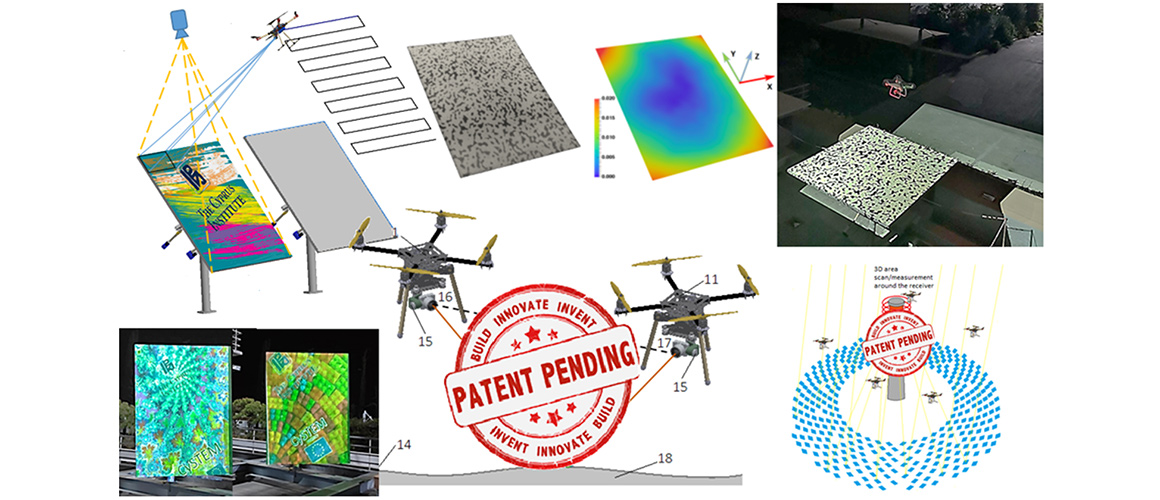Given the current advances and availability of commercial Unmanned Aerial Vehicles (UAVs), e.g drones, the ARES group is actively engaging in research and innovation activities with regards to development of relevant technologies to facilitate continuous, real-time monitoring of Concentrating Solar Thermal (CST) systems.
Already, ARES group is engaging custom made UAVs and has developed, tested, validated and it is currently operating an UAV-assisted close-range photogrammetry method which enables fast, accurate and of high spatial resolution characterization of the reflector surface of heliostats.
Furthermore, ARES group has currently two relevant patent applications pending for approval. These regard to:
- UAV-based system and method for the characterization of the geometry of solar concentrating mirrors (PCT/IB2021/053674): This regards to an airborne, drone-based non-intrusive reflector field characterization system that offers the following advantages with respect to the current state-of-the-art:
- There is no need for special treatment for the surface of the mirrors, and it is thus applicable to reflector fields of any size
- There is no need for moving or installing special equipment within the heliostat field
- Offers high spatial resolution of the resulting geometry, independent of the orientation of the mirror
- It is extremely portable, very easy and very fast to deploy, flexible and can operate also during nighttime
- Its modularity can be significantly enhanced, i.e. a fleet of drones can be employed to characterize the flux at very large plants with each drone having its own flight pattern.
- UAV-based system and method for the characterization of the radiant field of reflective concentrating solar systems (PCT/IB2021/053679): This regards to an airborne, drone-based system that can be employed for full characterization of the radiant field of CST systems. The system can also operate in conjunction with ray-tracing software, providing a stream of information to the latter for real-time fine-tuning of the radiant field estimated by the software.
Both of the above methods can be configured to be fully automated to the point to be autonomous, meaning that the systems can be configured and programmed to perform their tasks automatically, maintaining its continuous operation through self-charging stations distributed within the CST field. Both systems are currently under development.
